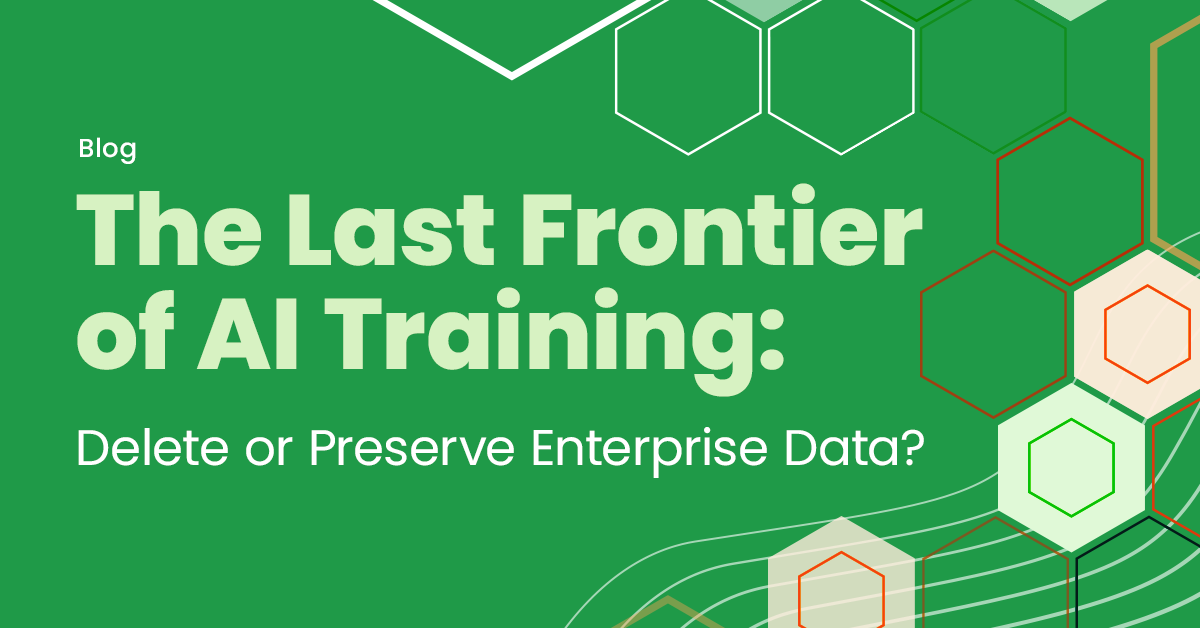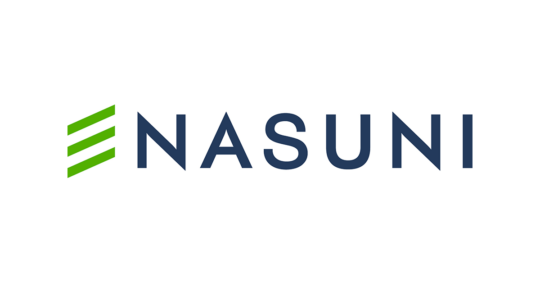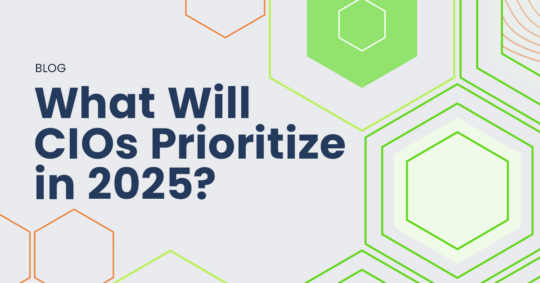The Last Frontier of AI Training: Delete or Preserve Enterprise Data?
Nasuni Chief Innovation Officer Jim Liddle discusses the debate of whether IT teams should delete or preserve historical enterprise data.
February 19, 2025 | Jim Liddle

Elon Musk recently declared that AI has already ingested virtually all available public data. Whether or not Musk is correct, the returns from training on publicly available data are rapidly diminishing, forcing companies to prioritize a critical strategic decision. Should they delete their historical unstructured data to minimize costs and risks, or preserve it as a potential goldmine for future AI training and pattern analysis?
The temptation to delete historical data as a cost saving measure has been growing as data volumes expand exponentially. We hear a lot of companies talk about deleting data to free up budget for AI initiatives. But the economics are more nuanced. As enterprise AI use becomes more prevalent, this historical data may end up being worth far more to your business.
Burden to Asset
While current AI model training requires substantial technical expertise and resources, the barrier to entry is likely to lower significantly in the coming years. This democratization of AI training capabilities could transform historical enterprise data from a storage burden into a valuable asset. Unlike public data, which according to Musk has been widely consumed, enterprise data remains pristine from an AI training perspective – containing unique patterns, interactions, and insights that could prove invaluable.
The decision to preserve or delete enterprise data therefore involves a complex economic calculation between costs and potential value.
Costs of Preservation:
- Storage infrastructure and maintenance
- Security measures and compliance monitoring
- Regular data auditing and management
- Potential liability and breach risks
Potential Future Value:
- Proprietary AI model training
- Historical pattern analysis and trend identification
- Competitive advantage in future markets
- Potential licensing or partnership opportunities
While storage costs continue to decrease, the security and compliance burden grows heavier. The preservation of enterprise data isn’t just an economic decision – it’s heavily influenced by regulatory frameworks such as GDPR. Companies must navigate these regulations while maintaining the flexibility to leverage their data assets in the future.
Still, the potential future value of this data could still far exceed these costs, especially as AI training becomes more accessible to enterprises.
Constraints vs. Opportunities
Rather than choosing between complete deletion and total preservation, companies could consider a nuanced approach:
- Smart Archiving: Intelligently shifting data to lower cost storage tiers enables the preservation of high-value unstructured data while eliminating redundant or low-value information (Nasuni enables cost-effective object storage from Azure, AWS, or Google Cloud at various lower cost tiers)
- Privacy-Preserving Techniques: Employing anonymization and pseudonymization to maintain data utility while reducing regulatory burden
As AI continues to evolve and public datasets become increasingly exhausted, enterprise data represents a unique resource. While the costs and risks of data preservation may seem significant, the potential future value of this untapped data source could be transformative. Organizations should carefully evaluate their position and develop a strategy that balances current constraints with future opportunities.
Rather than viewing this as a binary choice between deletion and preservation, companies should consider implementing smart data management strategies that maintain valuable data assets while minimizing risks and costs. The future value of enterprise data may well exceed our current expectations, making thoughtful preservation strategies a crucial component of long-term business success.
Related resources

Data foundation for AI
Nasuni’s hybrid cloud platform capabilities enhance your AI data strategy through consolidating, understanding, and leveraging your data.
Learn more
White paper
Transforming Unstructured Data Chaos into AI Order
A robust data strategy is crucial for AI adoption in businesses. This whitepaper offers a framework to centralize data, ensuring validity and security for…
Learn more
January 20, 2025 | Lance Shaw
What Will CIOs Prioritize in 2025?
Nasuni Product Marketing Director Lance Shaw discusses Gartner’s recent 2025 CIO Priorities report, and what it means for global enterprises.
Read more
Data foundation for AI
Nasuni’s hybrid cloud platform capabilities enhance your AI data strategy through consolidating, understanding, and leveraging your data.
Learn more
White paper
Transforming Unstructured Data Chaos into AI Order
A robust data strategy is crucial for AI adoption in businesses. This whitepaper offers a framework to centralize data, ensuring validity and security for…
Learn more
January 20, 2025 | Lance Shaw
What Will CIOs Prioritize in 2025?
Nasuni Product Marketing Director Lance Shaw discusses Gartner’s recent 2025 CIO Priorities report, and what it means for global enterprises.
Read more
Data foundation for AI
Nasuni’s hybrid cloud platform capabilities enhance your AI data strategy through consolidating, understanding, and leveraging your data.
Learn more
White paper
Transforming Unstructured Data Chaos into AI Order
A robust data strategy is crucial for AI adoption in businesses. This whitepaper offers a framework to centralize data, ensuring validity and security for…
Learn more
January 20, 2025 | Lance Shaw
What Will CIOs Prioritize in 2025?
Nasuni Product Marketing Director Lance Shaw discusses Gartner’s recent 2025 CIO Priorities report, and what it means for global enterprises.
Read more